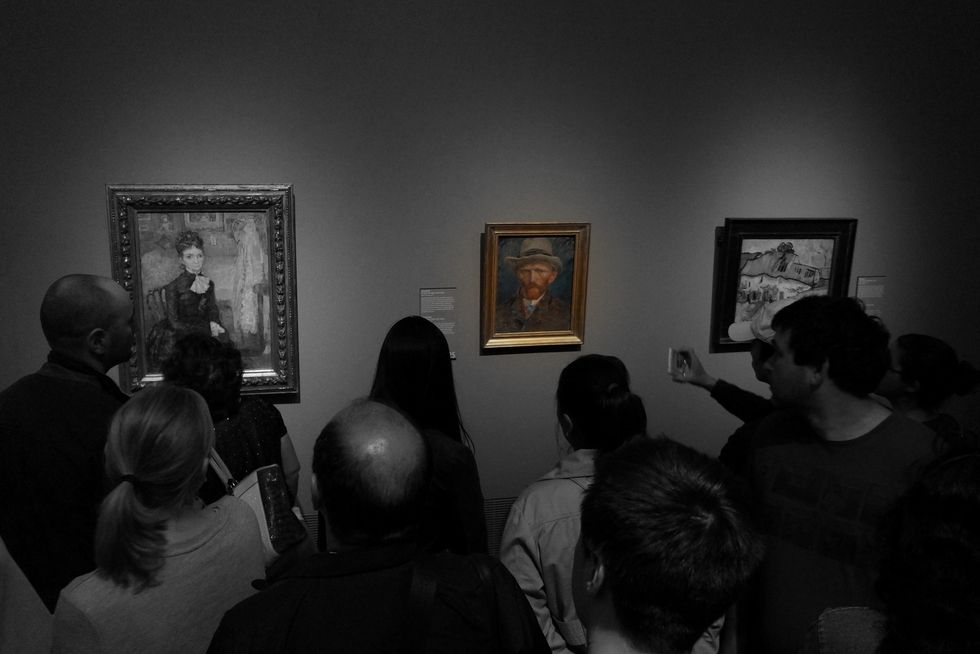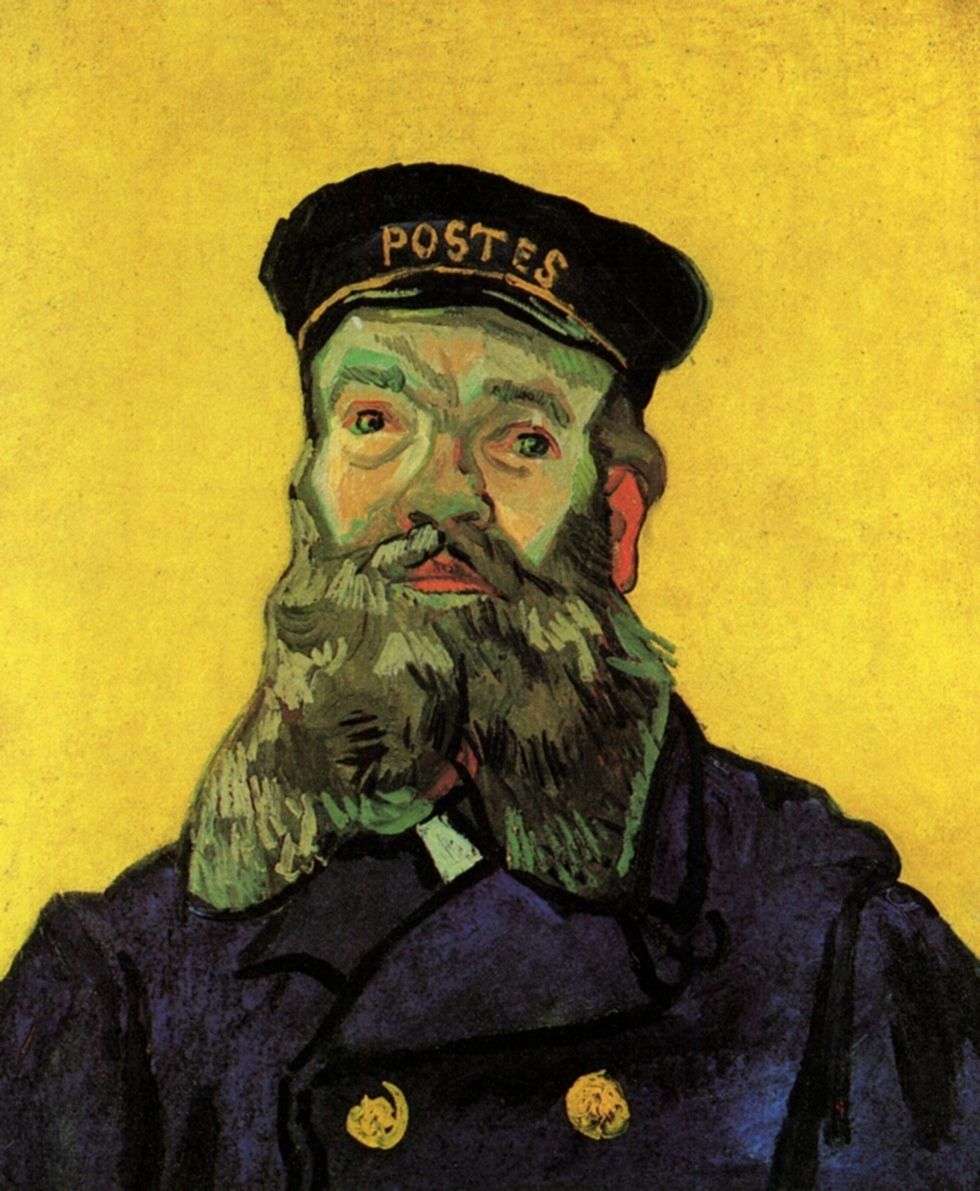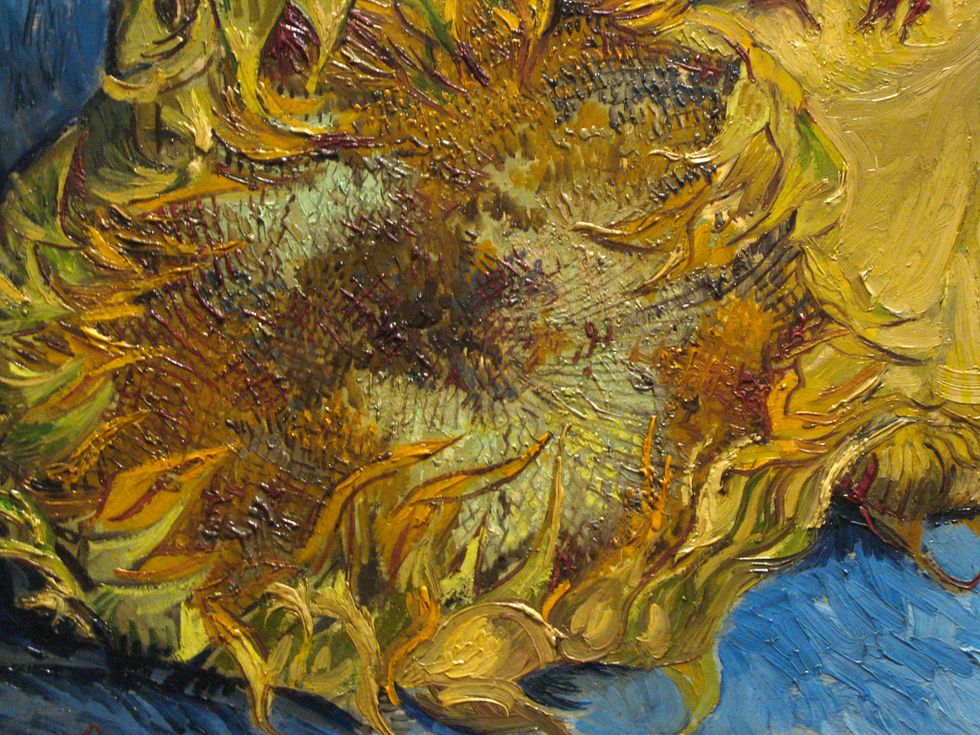"Loving Vincent" is a passion project, bigger than anything there ever was. A pioneer and work of art in and of itself, it is the first fully painted movie and it's shaking up cinema. The film is a touching tribute to the famed French Impressionist Vincent van Gogh, who shook the art world in his short career before his tragic departure.
Set in the countryside of Auvers, the film explores van Gogh's suicide by gunshot. It airs a sense of mystery, questioning accounts of events and motives. Fine looks are given into van Gogh's life from youth, his artist becomings, the trip to France that carved him, and even the notable letters sent to his brother. The strong narrative elements in "Loving Vincent" attempt to understand and explain what made him tick, raising the theme of tortured artists and the power of escape in art.
Every character is introduced from the portrait which they were painted by van Gogh. However, issues do arise in this visual trip. Van Gogh did not paint every aspect of his life. Rather than overstep by creating scenes of his youth or memories from scratch, the director opted to show them in black and white. Based on existing photographs, they stand starkly from most of the film to keeps its promise. Effects were added to give a sense of wear and tear, presenting them as if they too survived from the period.
Art historians have accumulated comprehensive information on van Gogh. In an interview with The Washington Post in 2014, producer and writer, Hugh Welchman, spoke about chronicling van Gogh's life and his notoriety:
"more people know a couple of facts about Vincent’s life than any other painter. It might just be, 'He’s the one who went mad and cut off his ear, isn’t he?' but still it’s there, in hundreds of millions of people’s heads — whereas they would be [hard-pressed] to tell you facts about Monet or Michaelangelo. They could probably tell you about da Vinci’s obsession with flying, his invention of the helicopter, but not about his life."
Written and directed by animator Dorota Kobiela, this passion project was appropriately made by a fan. She found van Gogh's life to be touching and focused her master's thesis on his craftsmanship. In the spirit of celebrating artists in film, he was the person Kobiela set her sights on, wanting to tell as many as possible about his story in the truest way: with paintings.
Kobiela took her innovative idea to a crowdfunding Kickstarter campaign. Soon thereafter, donors and support outpoured. With eager van Gogh fans wanting to continue his legacy, "Loving Vincent" was steamrolled into production.
Made on an honest budget of $5.5 million for what was supposed to be a short film, "Loving Vincent" would take a grueling six years to see the light of day. With her own origins in painting before making the switch to filmmaking, Yuriy Norshteyn's "Tale of Tales" and Aleksandr Petrov's “The Old Man and the Sea” were major works of inspiration.
Creating "Loving Vincent" became immersed in the crew's life. 65 of the total painters worked every day in a sweaty Poland studio set. The production magic is not secret. The creators have been transparent with their design and vision. On paper, it seems impossible, and numerous people told them so. But it is not until you can see it all come together on screen that it is believable.
Going to great lengths to cast actors close in resemblance to the patriots that van Gogh knew personally. Stars Douglas Booth, Helen McCrory, Chris O’Dowd, Saoirse Ronan and Aidan Turner indeed bare an uncanny look, which is highlighted as the end credits roll. For those unfamiliar with his works, the camera holds on the image and the star is next to each.
Poland was a point of interest because of its acclaimed oil painting art education. After a call went out for local Poland artists, the pooling wound up dipping into international markets. Like that of a college, an entrance exam had to be taken to prove you were up to the task.
Should you be noteworthy from the 4,000 starry-eyed applicants, an intense 18-day training course awaited you. It was formed before production to teach artists how to evoke van Gogh's famed thick brushstrokes and interplay of bold colors. 90 design paintings were present in pre-production to give the 125 artists a sense of what they should aspire to make going in.
These actors were then filmed on constructed sets to document natural bodily movements. From sets, picking the featured locations, or tapping into imagination with scenes going on in front of green screens. Film rolls were then given to artists who willfully watched the action unfold on monitors for reference material. Using oil paint on 40 1/2 x 23 2/3 inch canvases, each conception took into account not only mimicking life but to envision how van Gogh would approach the unfolding action as well.
Interpretations were made to do justice to van Gogh's oeuvre with an understanding of framing and screen presentation. As if that was not an unbeatable hurl, van Gogh's Impressionist style and versatile perspective made the process harder. Reflecting on this, cinematographer Tristan Oliver said,
"But then what you discover is that Van Gogh didn’t always paint everything at once from the same point of view. So we have Marguerite Gachet (Ronan) sitting at the piano when we first see her. But he started the painting sitting down, then at some point stood up. So we had to line a camera up to meet two, if not three viewpoints, so we could see the top of the piano, and the keyboard, and look up at her from below. Finding a photographic frame to match that expressionistic painterly frame was very interesting."
After completing one frame, the artist used a 6K resolution camera to take a digital still. Then, they continue with the next frame. This receptive process concludes once the scene ends. This style is comparable to stop-motion animation, which requires constantly adjusting animated props to make a production.
For perspective, there are 898 scenes in "Loving Vincent."Every second requires 12 frames in the 87-minute production. On average, each frame took one hour to two days for completion. Frames, which were constantly painted on, total at 62,450. The canvas of each respective scene was kept and some were sold before and during its release.
3,000 liters of paint named van Gogh, by the brand, Royal Talens, were poured out. With this pioneering came the issue of paint drying out before a scene could be done. Thus, clove oil was mixed in to give the oil a deeper breath of life.
While contemporary critics argue that cinema is losing its identity to a mundane blockbuster formula, this has been born from the indie circuit. Its visual poetry and rejection of computer-generated imagery are unique with today's mundane blockbuster film market. Kobiela has boldly chosen to break the boundaries of film and redefine what constitutes it. Her tribute is refreshing to see how the medium evolves, from 35 mm film print to impasto paint slicked across.
"Loving Vincent" is a moving way to re-experience the canvas you have stood before on the world's most prestige museum walls. Life is given and the story continues, unfreezing a moment in time. "Loving Vincent" is currently in limited release in the US.






















